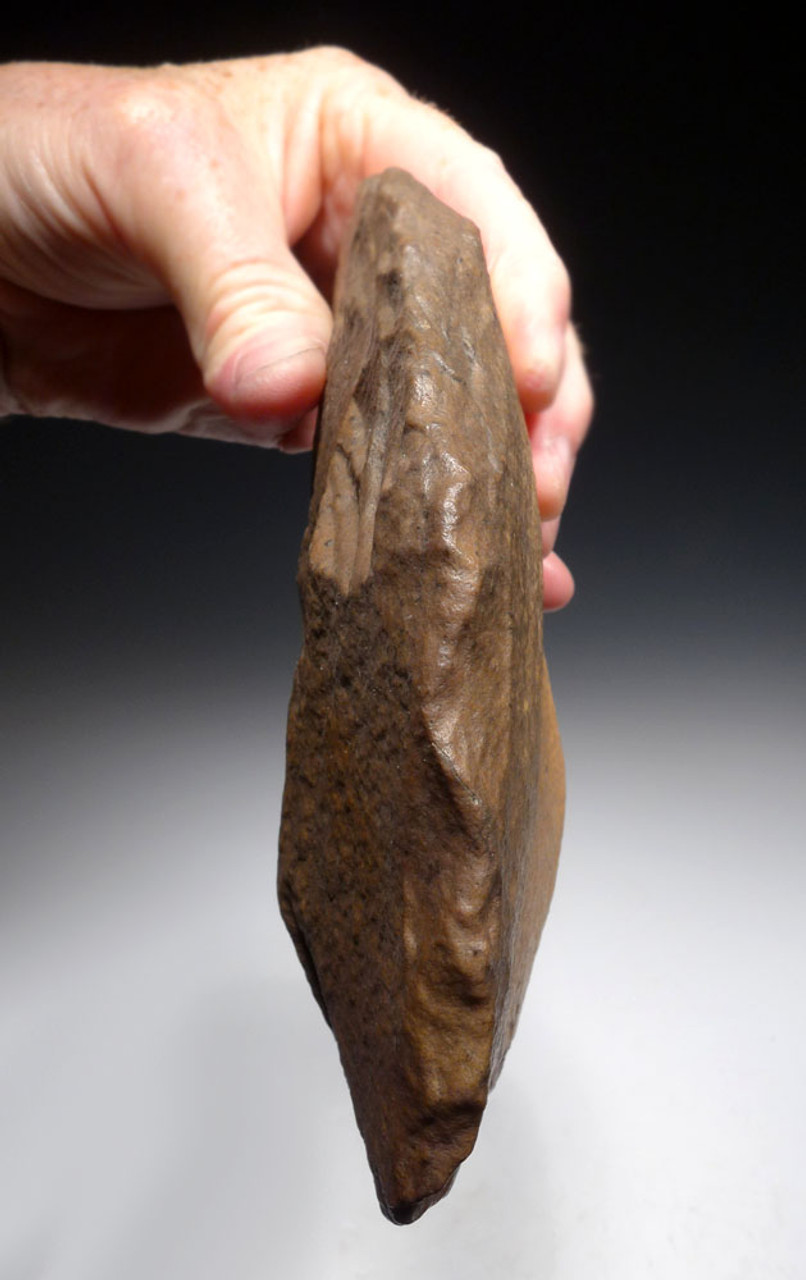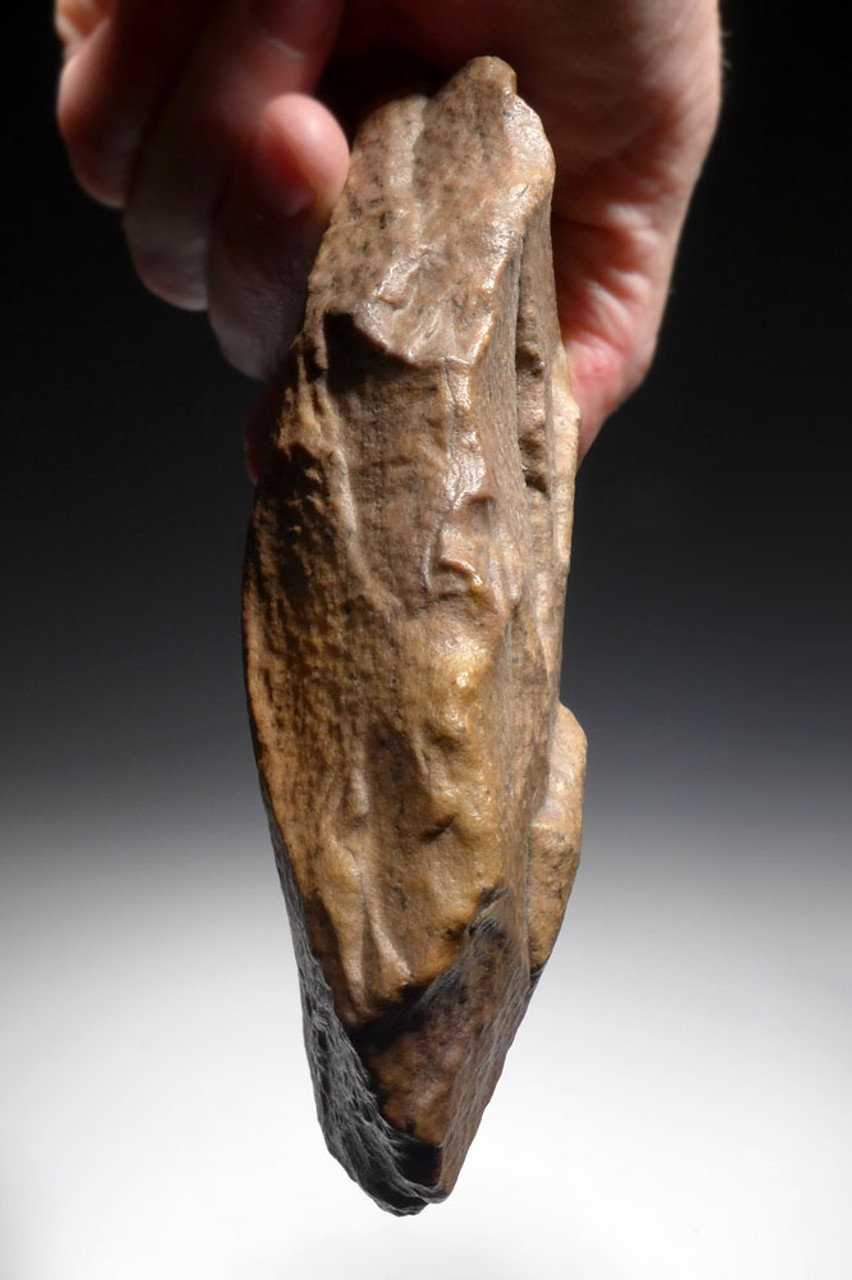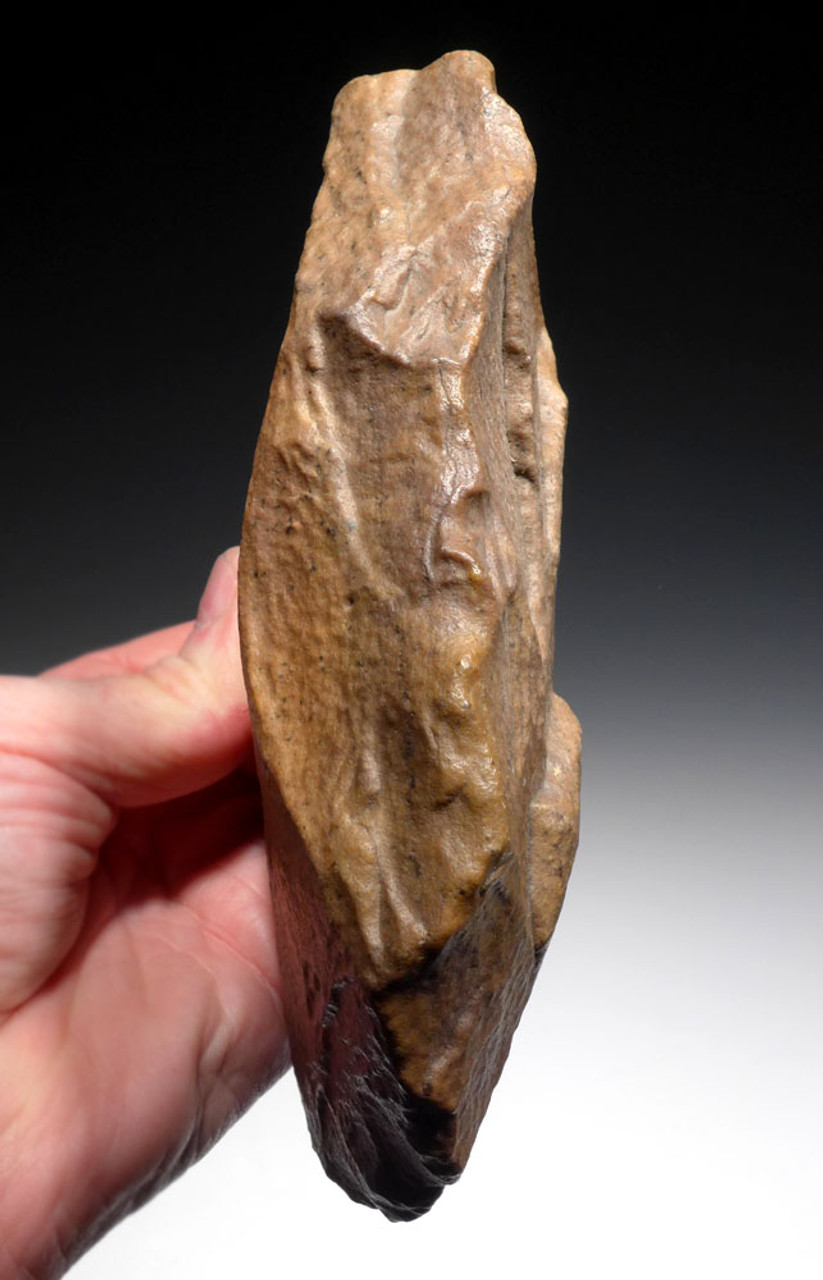Product Description
SEE MORE LOWER PALEOLITHIC ACHEULEAN STONE ARTIFACTS
This GENUINE Acheulean hand axe was made and used by early humans of the primitive species Homo erectus (ergaster). It was surface-collected from an exposed Lower Paleolithic Acheulian site in the Sahara Desert of Northwest Africa. Acheulean Lower Paleolithic hand axes from Africa represent the first scientifically documented intelligent tool made by primitive humans. Prior to these Saharan Acheulean handaxes, only crude pebble and flake tools existed in the human fossil record.
Made of quartzite, this Lower Paleolithic African specimen is a MUSEUM-CLASS example of an Acheulean OVATE CLEAVER hand axe. This stone hand axe would have been ideal for smashing and piercing the large limb bones of hunted game animals to access the prized marrow inside. The proximal end has an expertly flaked, well-thought grip design. Overall flaking is superb and shows masterful craftsmanship from its primitive human artisan. The chopping tip and edges are intact and well-made with evidence of original prehistoric primary and secondary flaking. Original sediment and mineral encrustations are still present in microscopic crevices and on some surfaces - a trait ONLY found in authentic Paleolithic artifacts like these. These features are a testament to the age and authenticity of ALL Saharan Paleolithic artifacts.
The entire hand axe is patinated with an incredible, bi-colored patina from resting undisturbed for millennia on one side, in the open desert. The entire surface glistens with a mesmerizing "desert varnish". "Desert Varnish" is a term for the glossy surface feature of some Saharan desert Paleolithic stone artifacts caused by the wind-driven sand that polished and deposited microscopic layers of silica on the surfaces of the artifact over time, giving it a sheen.
HISTORY
During this time in prehistory when this Lower Paleolithic tool was made, the Sahara Desert (where this stone tool was found) was a savanna rich in wildlife. Prior to the prehistoric global warming that turned the vast region to desert, early humans lived alongside prehistoric giraffe, bison and elephant, which were vital to their survival. Hunting and butchering these animals would have required specialized tools such as those found in the Acheulian Period.
 US DOLLAR
US DOLLAR
 EURO
EURO
 AUSTRALIAN DOLLAR
AUSTRALIAN DOLLAR
 CANADIAN DOLLAR
CANADIAN DOLLAR
 POUND STERLING
POUND STERLING






























